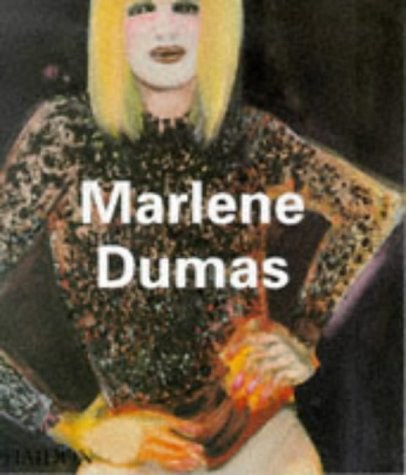
Mason Currey《Daily Rituals》
书刊介绍
内容简介
Franz Kafka, frustrated with his living quarters and day job, wrote in a letter to Felice Bauer in 1912, “time is short, my strength is limited, the office is a horror, the apartment is noisy, and if a pleasant, straightforward life is not possible then one must try to wriggle through by subtle maneuvers.”
Kafka is one of 161 inspired—and inspiring—minds, among them, novelists, poets, playwrights, painters, philosophers, scientists, and mathematicians, who describe how they subtly maneuver the many (self-inflicted) obstacles and (self-imposed) daily rituals to get done the work they love to do, whether by waking early or staying up late; whether by self-medicating with doughnuts or bathing, drinking vast quantities of coffee, or taking long daily walks. Thomas Wolfe wrote standing up in the kitchen, the top of the refrigerator as his desk, dreamily fondling his “male configurations”. . . Jean-Paul Sartre chewed on Corydrane tablets (a mix of amphetamine and aspirin), ingesting ten times the recommended dose each day . . . Descartes liked to linger in bed, his mind wandering in sleep through woods, gardens, and enchanted palaces where he experienced “every pleasure imaginable.”
Here are: Anthony Trollope, who demanded of himself that each morning he write three thousand words (250 words every fifteen minutes for three hours) before going off to his job at the postal service, which he kept for thirty-three years during the writing of more than two dozen books . . . Karl Marx . . . Woody Allen . . . Agatha Christie . . . George Balanchine, who did most of his work while ironing . . . Leo Tolstoy . . . Charles Dickens . . . Pablo Picasso . . . George Gershwin, who, said his brother Ira, worked for twelve hours a day from late morning to midnight, composing at the piano in pajamas, bathrobe, and slippers . . .
Here also are the daily rituals of Charles Darwin, Andy Warhol, John Updike, Twyla Tharp, Benjamin Franklin, William Faulkner, Jane Austen, Anne Rice, and Igor Stravinsky (he was never able to compose unless he was sure no one could hear him and, when blocked, stood on his head to “clear the brain”).
Brilliantly compiled and edited, and filled with detail and anecdote, Daily Rituals is irresistible, addictive, magically inspiring.
相关推荐
-

淩鸿勋口述自传
淩鸿勋口述自传 内容简介 《20世纪中国科学口述史:凌鸿勋口述自传》选择亲历中国20世纪科学技术发展史的中国著名科学家作为主要访谈对象,本求真之原则,记录其亲历...
-

直系教头冯国璋
直系教头冯国璋 内容简介 曾有人称冯国璋、王士珍和段祺瑞为“北洋三杰”。王士珍是北洋之龙,见首不见尾;段祺瑞是北洋之虎,威武霸气;而冯国璋则是北洋之狗,这说明他...
-

张琴秋传
张琴秋传 本书特色 国家新闻出版总署“三个一百”原创图书入围作品首部完整披露红军唯一女将领传奇成长史的巅峰之作张琴秋——百年中国史*不该被遗忘的传奇女英雄★ 史...
-

音乐大师
音乐大师 内容简介 引言一、写作缘由及意义二、国内外相关课题研究状况**章 生平与创作概况一、早期教育——那不勒斯(1685—1704)二、从师——威尼斯(17...
-

克里斯汀·迪奥《克里斯汀·迪奥与我》
1905年,克里斯汀·迪奥出生在法国的格兰维尔一个富有的商人家庭,克里斯汀·迪奥父亲从事肥料生意,母亲玛德林(Madeleine)是一
-

廖耀湘与蒋介石
廖耀湘与蒋介石 内容简介 这是一部遵照周恩来总理遗愿完成的作品,连题目也是他老人家生前预拟的。李默庵特为作品题写书名。我们有理由热忱向读者推荐。它是严农先生积十...
-

再苦也要笑一笑
《再苦也要笑一笑》内容简介:追求快乐是每个人的天性,但经历苦难也是人生的必然。人是哭着而不是笑着来到这个世界上的,或许就注
-

赵匡胤传
赵匡胤传 本书特色赵匡胤是我国历史上一个重要人物,史家在论及封建皇帝时,往往把唐宗、宋祖并称。事实上他代表了那个时代封建统治阶级的利益,我们对他应当作出应有的评...
-

迷你世界创想天地:未来生存大师(官方攻略1)
《迷你世界创想天地:未来生存大师(官方攻略1)》内容简介:《迷你世界创想天地》系列共分生存、战斗、建造、星能4册,无论你是刚
-

周颖南评传-周颖南文库(卷十三)
周颖南评传-周颖南文库(卷十三) 本书特色 周颖南1929年生于福建仙游。1950年南渡印度尼西亚创业,1970年举家迁居新加坡。他是成功的海外华人企业家,目前...
-

张之洞
张之洞 内容简介 13岁成秀才,15岁中头名举人,26中探花。入党清流,虽迈进封疆大吏行列,“作古后竟至囊 萧然,一家80余口几无以为生。”南疆抗法,砥柱中流。...
-

罗海岩《法拉奇》
从孩提起,法拉奇就喜欢读书,她的父母虽然生活不算宽裕,但买书很舍得花钱。16岁时,法拉奇进入佛罗伦萨大学医学院就读,不过只
-

欧元的新政治经济学分析
《欧元的新政治经济学分析》内容简介:本书运用新政治经济学的方法分析了欧元的产生、发展、地位、作用和未来前景。从新政治经济学
-

民国夫妻档案-夫唱妇不随
民国夫妻档案-夫唱妇不随 本书特色 这是一本写民国人物的散文畅销书。本书所选取的10对民国夫妻、20位男女,皆为民国时期有着一定影响的人物,将他们对照书写,两两...
-

高长虹与鲁迅及许广平
高长虹与鲁迅及许广平 目录 **章主将与副主将的会合**节冬夜拜访第二节“五人吃酒”第三节葬原七个月第二章莽原改组**节何以“无以应付外界”第二节何以“无以应付...
-

赵家璧《编辑忆旧》
《编辑忆旧》记录了作者从步入良友图书公司起,从事编辑出版事业的过程,以及对编辑出版工作的思考,并提供了大量有关三四十年代
-

吴燕和《人类学家三部曲:故乡.田野.火车》
本書以流暢生動的文字描繪一個趣味盎然的故事。吳燕和的人類學家三部曲,由童年故鄉的記憶開展,歷經中國古老的古都文化、日本殖
-

巴金与萧乾-俩老头儿
巴金与萧乾-俩老头儿 内容简介 本书为萧乾夫人文洁若对巴金和萧乾俩老头儿交往的深情回忆。穿越历史,为我们讲述了两位老人的风雨人生和坎坷的心路历程,让我们走进一代...
-

悲伤女王:不被宽恕的苏格兰玫瑰
悲伤女王:不被宽恕的苏格兰玫瑰 内容简介 “欧洲历史上*美的贵族女子”?“不列颠历史上*不幸的统治者”? &ld...
-

思想人-当代文化二十家
思想人-当代文化二十家 本书特色 读书时代牢记老师们的教诲:记者是杂家。读书真杂,还爱做梦。时而梦想当小说家,早年见闻是**手素材;时而梦想当历史学家,...





